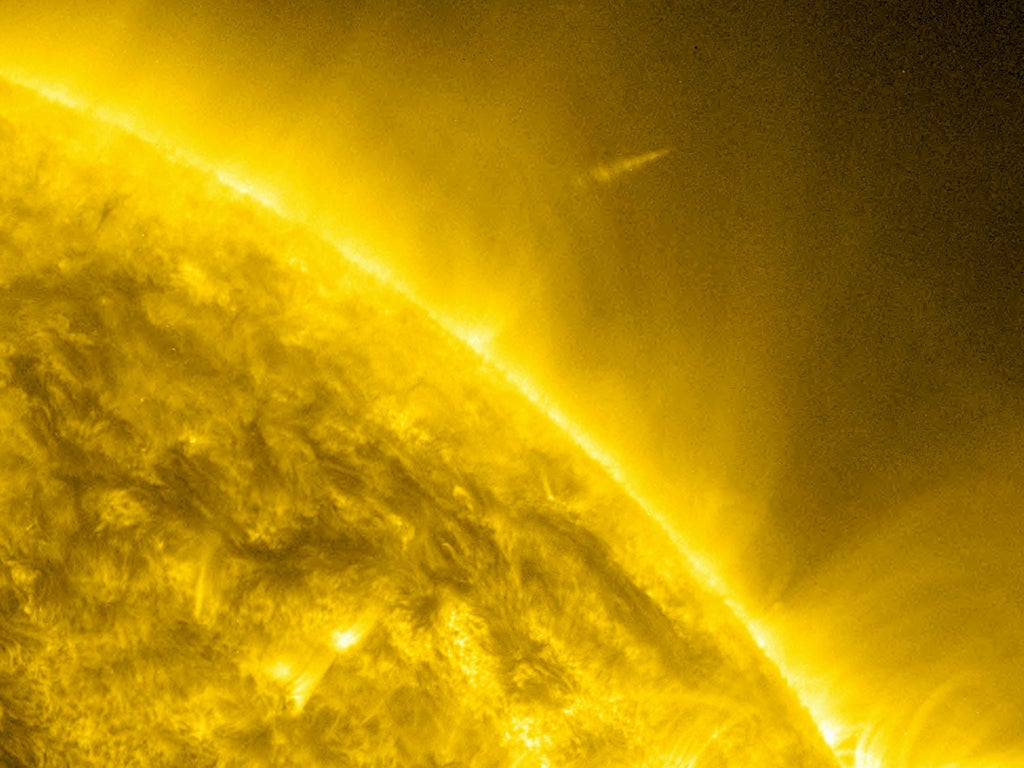Picture Of The Day: Comet's close encounter has a sting in its tail

With Comet Lovejoy being little more than a giant snowball, scientists held out little hope for it when it flew close to the Sun, whose outer surface temperatures can reach 6,000C. It had, so the theory went, a snowball's chance in hell.
But to their astonishment it survived the encounter, though with the loss of its tail. Astronomers had tracked 2,000 other sun-grazing comets make the same suicidal trip. None had ever survived.
But experts watching live with Nasa telescopes on Thursday first saw the Sun's corona wiggle as Lovejoy, which was only discovered a couple of weeks ago, went close. They were then shocked when a bright spot emerged on the other side – Lovejoy had lived. "I was delighted when I saw it go into the Sun and I was astounded when I saw something re-emerge, said Karl Battams, a solar researcher with the US Navy.
Lovejoy did not exactly come out of its hellish adventure unscathed. Only 10 per cent of the comet, probably millions of tonnes, survived the encounter, said W Dean Pesnell, project scientist for Nasa's Solar Dynamics Observatory. And the comet lost something pretty important: its tail. "It looks like the tail broke off and is stuck in the Sun's magnetic field," Mr Pesnell said.
Photograph by NASA Solar Dynamics Observatory / AP
Subscribe to Independent Premium to bookmark this article
Want to bookmark your favourite articles and stories to read or reference later? Start your Independent Premium subscription today.

Join our commenting forum
Join thought-provoking conversations, follow other Independent readers and see their replies